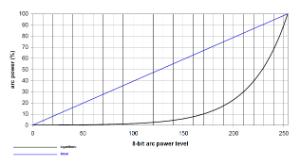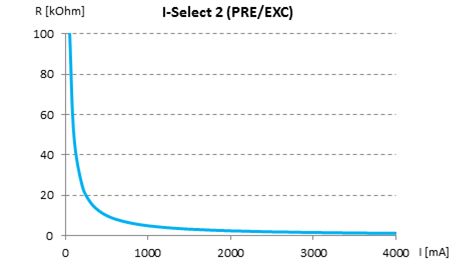LED systems
FAQ: Frequently asked questions
-
What is the IP rating of Tridonic LED modules and LED drivers?
-
LED modules for installation do not have an IP rating, unless otherwise indicated. IP protection must be provided by the luminaire. The IP rating of the LED engine is specified in the relevant data sheets. Unless otherwise indicated, LED driver units have an IP20 rating.
-
-
Can I switch my LED modules on the secondary side of the LED driver?
-
No, only primary-side switching is permitted. No hot plugging during operation.
-
-
What is the maximum allowed cable length between LED driver and LED module?
-
The maximum allowed cable length between LED driver and LED module is 2 m (4 m in a loop).
LED drivers are sensitive for the capacity at the output. Too high capacity may lead to malfunction or may switch off the driver. Longer cable length could work but there is not warranty from our site as it is out of specification.
-
-
Do LED modules need cooling?
-
For LED modules for which additional cooling is required the recommended heat sink area and Rth value are given in the data sheet. The specified heat sink may differ depending on the installed location. The maximum tc temperature must not be exceeded.
-
-
What standards apply to LED products?
-
The relevant standards are listed in the relevant data sheets. Generally these are EN 62031 and EN 62471.
-
-
What are the storage conditions for LED products?
-
LED products should ideally be stored in their as-delivered condition in their original packaging or in a dark place.
The permissible storage temperature range and the permissible storage humidity range are listed in the data sheets.
-
-
Does “protective coating” means that the product is watertight/waterproof?
-
No.
The LED modules are provided with a protective coating which protects them against surface moisture (to JEDEC JESD22 A100C) and high relative humidity. If the protective coating is damaged (e.g. by soldering) it must be subsequently restored.
-
-
What do you need to know if LED modules are encapsulated?
-
Encapsulation of LED modules is not permitted.
-
-
Is ESD protection needed when working with LED modules?
-
Yes. LED products from Tridonic are electronic components and as such are sensitive to electrostatic discharge.
To avoid ESD damage, the modules must be handled, packed and stored in an ESD protected environment. More detaiscanocnEOS/ESD guidelines".
-
-
What effect does the ambient temperature have on the forward voltage of LED modules?
-
The forward voltage is dependent on the ambient temperature, among other things. The forward voltage is higher at low temperatures.
-
-
What effect does the ambient temperature have on the luminous flux of LED modules?
-
The better the thermal management of the LED, the higher the luminous flux.
-
-
What standard system is used for the colour location/colour tolerances?
-
The CIE1931 colour system is used for all current products.
-
-
How much UV/IR radiation is in the light emitted by LED modules?
-
The light spectrum emitted by LEDs from Tridonic contains no UV or IR components.
-
-
Does the laser classification also apply to LEDs?
-
No, the “laser standard” does not apply to LEDs from Tridonic. EN 62471 applies instead.
-
-
What is the Ra, Rff colour rendering index?
-
The colour rendering index (Ra) is specified in the relevant data sheets. Rff is a special colour rendering index for illuminating meat and meat products.
-
-
PWM dimming and TV cameras – what needs to be considered?
-
We can’t guarantee “TV ready” with our equipment. The frequency required to ensure flicker-free recording strongly depends upon the camera type. Whereas in some setups 300 Hz might already be sufficient, other TV studios might need much higher frequencies. In our PWM-dimmed products we use a frequency of 500 Hz and higher. If you want to be sure there is no flicker, then use one of our amplitude-dimmed products.
Logarithmic vs. linear dimming curve

A linear dimming curve is the most appropriate solution at first glance.
Human perception of brightness is not linear. That means brightness differences at low brightness are clearly visible. Whereas differences in bright light doesn’t matter.
To compensate this drawback, a dimming curve according to the DALI standard is used. This dimming curve has roughly an exponential curve and thereby compensates for the logarithmic brightness in about perception of the human eye.
The premium and excite driver series uses amplitude modulation only for dimming. This reduces the impact on camera systems.
-
-
Is I-Select GEN 2 compatible with I-Select GEN 1?
-
The two generations are not compatible with each other. In GEN 1, we had also different resistor ranges for different current ranges. With GEN 2, there is one range across all currents. Here the resistor value can be calculated with the formula:
R [k] = 5 V / Iout [mA] x 1000

-
-
How do I find a suitable LED driver for my LED module if it cannot be found in the LED matrix?
-
Several parameters have to be checked to be sure that all values are inside the limits. More detailed information can be found in the design-in guides of LED modules and also in the product manual of the LED drivers.
-
-
What can happen with my system if burst or surge pulses go inside the system?
-
If not specified otherwise, the voltages the driver can withstand are in compliance with the standard shown in the data sheet (IEC 61547, IEC 61000-4-4, IEC 61000-4-5).
Higher voltages are indicated separately in the data sheet (example: 4 kV industry drivers).
Depending on the LED driver topology, part of the voltage can pass through to the LED driver output. The level of this voltage is also shown in the data sheet. So keep in mind that the LED module must be able to withstand this voltage or has to be isolated to GND in the required amount.
-
-
Can I use the same ready2mains programmer for all my premium and excite products?
-
Yes you can. So it is not necessary to change the programmer in your production line when you want to program another product.
-
-
If the lockBit is set, can it be disabled again?
-
lockBit ensures that the LED driver does not respond to any programming via mains. It cannot be disabled.
-
-
What can I do if I want to change the current if lockBit is already set?
-
premium products: you can use a I-Select 2 PLUG or program the current via DALI
excite products: you can use a I-Select 2 PLUG
-
-
What is the priority of setting the current?
-
Listed from highest to lowest priority for premium (3 options) and excite (2 options as there is no DALI)
- DALI
- I-Select 2 PLUG
- ready2mains
-
-
How often can I program my driver over ready2mains if lockBit is not set?
-
For premium products, no limit is specified.
For excite products, can be programmed 5 times.
-
-
Are commands sent by the programmer/gateway to the LED driver modulated to the mains line or do they modify it directly by cutting the wave itself?
-
We do slight phase cuts at the zero crossing, so by cutting the wave itself.
-
-
What is the maximum distance from gateway and last luminaire?
-
Flush-mounted: 100 m
Cabinet-mounted: 400 m
-
-
Number of ready2mains gateways per circuit breaker
-
Note that the ready2mains gateways are switched on at the zero crossing, so no problems with inrush current will occur.
-
-
Is there a maximum number of switches connected to the gateway at the same time?
-
No.
-
-
Dimming range of our premium and excite products
-
premium: range of dimming 1-100 %
excite: range of dimming 15-100 %
Lowest achievable dim level is 15 % of full load.
With lower loads minimum reachable dim level is therefore higher
-
-
Can each single luminaire be addressed over ready2mains?
-
No, ready2mains uses one-way communication and broadcast.
-
-
What happens if you connect ready2mains programmer’s DALI pins to a DALI network?
-
If there is already a DALI power supply in the network, the internal power supply of the programmer is switched off.
-
-
How long does it take to set the current with a programmer to a ready2mains LED driver?
-
About two seconds.
-
-
Why does my KNX-DALI gateway not communicate with DALI-2 LED drivers?
-
According to the original DALI standard, LED drivers use DALI device type 6 only. KNX-DALI gateways are specified to communicate with this device type and this works properly.
The new DALI-2 standard is different. LED drivers supporting the DALI-2 standard use different DALI device types. In case a KNX-DALI gateway does not support this new standard, it may cause loss of communication with DALI-2 LED drivers.
If this happens, please contact the gateway supplier to clarify if a firmware update can solve this.
-